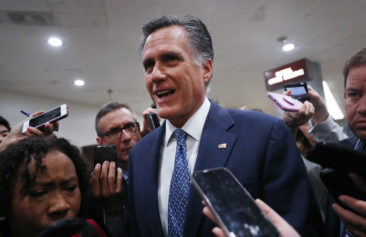The Washington Post story about Mitt Romney’s 2011 tax filings was filled with interesting tidbits that really make clear the differences between the rich and the not-so-rich.
Romney paid 14.1 percent in taxes, or $1.9 million in taxes on $13.69 million in income in 2011, most of it from his investments, a rate higher than it would have been (10.55 percent) if he had claimed all the charitable deductions he and his wife, Ann, made.
His running mate, Rep. Paul Ryan (R-Wis.), also released his 2011 tax filings. Ryan had an adjustable gross income of $323,416 and paid $64,764 in taxes, or about 20 percent, according to his return. He earned $153,359 in wages, $33,153 in capital gains and more than $116,043 from rental real estate, royalties and other miscellaneous income, The Post reported.
For the average American—or perhaps the 47 percent whom Romney singled out in a speech as paying no taxes—either man’s earnings would be a welcome sight in their bank accounts.
Still, 20 percent is a harder hit on an income of $300,000, than 14 percent of $13.6 million, no matter how you view it. And those paying a higher rate on less income are still getting used to the idea that a millionaire can earn substantially more money and pay a significantly lower percentage of taxes on those millions.
In addition, a summary of Romney’s effective tax rates from 1990 through 2009 showed the candidate paid an average annual rate of 20.2 percent, when the investment tax rate was higher.
According to The Post’s analysis, “Romney’s overall tax rate is in line with that of the average American taxpayer. However, it has drawn fire because the federal tax system is designed to be progressive—the more you earn, the more you are supposed to pay.”
Romney was able to cut his 2011 taxable income by $4.8 million because of losses carried over from previous years under a provision in the tax code that allows people who lose money on their investments to deduct those losses against the capital gains or carry the losses over to the next year and subtract that figure from the base taxable income, The Post reported.
According to the Tax Policy Center, a nonpartisan organization in Washington, the middle 20 percent of U.S. households paid an average of 15.5 percent in taxes in 2011. The figure includes income and payroll taxes.
The complicated, voluminous, 379-page tax filing revealed that none of Romney’s 2011 income came from wages and explained a range of earnings, losses and foreign investments, including the Amsterdam, Dublin and the Grand Caymans. Romney also can amend his returns anytime over the next three years to claim the charitable deductions he did not take in 2011.
It’s all legal, but many working-class people are still trying to figure out how someone who earned $13.69 million pays taxes at a rate just a few percentage points lower than theirs.
It remains to be seen whether releasing this additional information will quiet critics or simply confuse voters into ignoring the tax issue because it is too complicated to comprehend.
What is clear to most Americans, however, is the big difference between the wealthy and the way the not-so-wealthy manage their finances.
Jackie Jones, a journalist and journalism educator, is director of the career transformation firm Jones Coaching LLC and author of “Taking Care of the Business of You: 7 Days to Getting Your Career on Track.”

